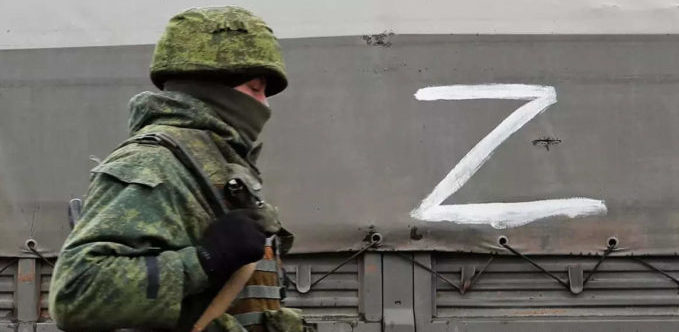Development of the military-industrial complex has been a high priority for Russia ever since the Soviet times. Russia has never stopped producing modern tanks, military trucks and artillery systems.
However, the current weapons systems used by the Russian occupiers are mostly relics of the past, at a time when modern warfare is all about technological advantages.
Unmanned drones, modern electronics, optical gear, and satellite navigation systems are needed to conduct modern combat operations. Without them, the troops are left blind on the field of battle.
In the last 30 years, high-tech manufacturing has become the most globalized industry in the world. In order to develop the most technologically advanced products, worldwide cooperation is required.
But, the Russian defense industry is losing contracts with leading high-tech hardware manufacturers. No one wants to work with a country that began a bloody war in the middle of Europe.
Will the Russian military be able to stand up to NATO after international sanctions take effect, and can it be saved by domestic production?
Night vision devices
Russia depends heavily on Western technologies, especially on the import of night vision equipment. Russia used to equip its vehicles and troops with night vision devices manufactured by French companies Thales (from 2007) and Safan (from 2013).
After Russia’s annexation of Crimea and occupation of parts of Donetsk and Luhansk oblasts in 2014, the EU sanctioned sales of military technologies to the belligerent nation, thus blocking Russia’s access to western optical hardware and dealing a heavy blow to its military manufacturing capabilities, or at least slowing them down.
However, it has come to light that the French continued delivering equipment under old contracts, and only stopped doing so in 2020.
Special Matis STD cameras made by Safran, were meant for T-72 tanks, as well as for T-90 tanks and the new T-80BVM.
Thales equipped 60 two-seat multipurpose Su-30 fighter jets with TACAN navigation systems. Russian jets also received Safran-manufactured Sigma 95N systems, which provide autonomous navigation even in GNSS-denied environments.
The French companies also supplied target sight systems for Ka-52 helicopters.
Today, after launching a full-scale invasion of Ukraine, Russians can no longer hope to conclude new deals with Western firms and must rely solely on domestic production.
In fact, the Russian industry can manufacture night vision equipment, but it is inferior to Western counterparts. Even if Russian engineers can successfully assemble a high quality prototype, it will be difficult to mass produce.
Expensive modern equipment and substantial orders are required in order to launch mass production.
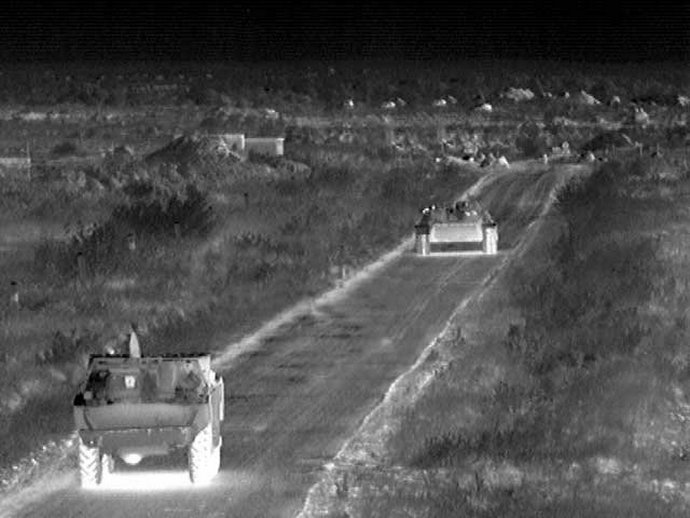
Due to a strong worldwide demand for their products, French companies are able to manufacture large quantities of equipment. But the isolated Russian market cannot. Moreover, Russian alternatives are more expensive and less effective than Western devices.
Tanks, an essential component of the Russian war machine
The Russian military has over 12,000 tanks in long term storage, making it the largest tank army in the world.
However, it is unknown how many of them are actually functional, and how many are only fit for a World War II museum. Considering the affinity that the Russian dictator and his retinue have for all things Soviet, the two alternatives are equally likely.
In order to reactivate
the tanks and send them into battle, they need to be repaired and modernized by Uralvagonzavod and the Chelyabinsk tractor factory, which are under EU sanctions.
According to Ukrainian Intelligence, all work at these companies ceased after the sanctions were implemented.
At first, Uralvagonzavod denied this information, but later advised that some employees had been forced to take vacations. The media reported that this was due to the lack of spare parts.
Productivity in these companies is expected to further deteriorate in the future, as it will be more difficult to secure financing, find customers and procure spare parts under the current sanctions.
Furthermore, Russia’s own research and development efforts have taken a downturn due to financial concerns. State corruption, financial sanctions and procurement issues will make the process long and tedious, if not stop it all together.
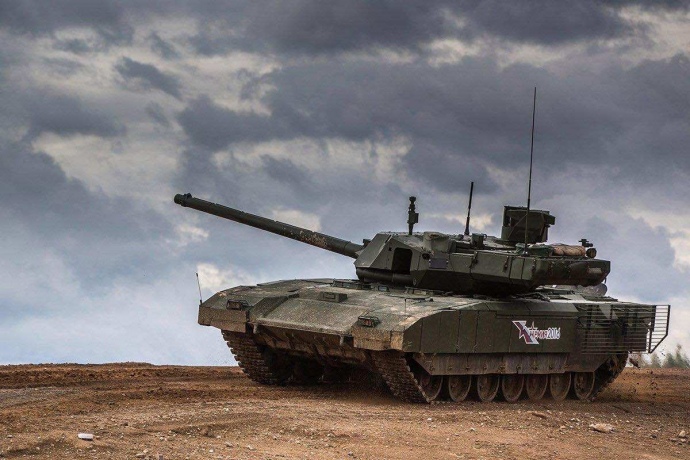
Prior to the war with Ukraine, Putin’s propagandists threatened the world with their high-tech T-14 Armata tank, which was billed as the pride of Russia’s ground forces. However in the 44 days of war, nobody has seen it. Why?
Back in 2018, the vice-premier of Russia, Yuri Borysov, admitted that the Armata was too expensive, and called for greater use of T-72 tanks, which entered into service back in 1974.
The most powerful Russian tank, T-90, which has been in production since 1992, cost 118 mn rubles using the pre-war exchange rates, while the new Armata was twice as expensive.
40 Armatas are expected to enter into service after 2023. However, because of the devaluation of the ruble and a deficit of spare parts, their cost is expected to rise, so it is quite possible that there will not be enough funds to cover the whole order.
This means that Putin’s regime will not be able to increase Russia’s defense budget and improve defense procurement. In fact, after the failed Ukraine campaign, it will have to prioritize restoring its lost potential, instead of adding new types of armaments, such as the Armata tank.
In 2021, Russia’s defense budget amounted to $61.7 mn, which constitutes just 7.93% of America’s defense spending.
What weapons for Ukraine would help it win the war against Russia
Electronics
The Armata tank,
as well as Kinzhal and Caliber missiles, all rely on expensive electronics. The missiles cannot be manufactured without a steady supply of semiconductors. But, due to sanctions, Russia could be left without microchips.
Of course, Russia has its own projects - Elrobus and Baikal microprocessors. However, these are manufactured by Taiwan’s TSMC, which halted all exports to Russia following the war in Ukraine.
Redirecting chip manufacturing to Russian and Chinese production companies is only partially feasible. Replacing Taiwanese semiconductors, even at a basic level, requires billions of investments and several years to set up the actual process.
Russia’s Micron is allegedly capable of producing the outdated 180-90 nanometer semiconductors, which comply with 2003 technology standards. However, it is unlikely that Russia can ever successfully achieve technology standards of the 2000s. According to Radio Liberty, Micron is using outdated equipment from ASML, a Dutch multinational corporation.
It is unlikely that the Netherlands will continue providing maintenance service for Russian hardware. Russia may be able to switch to Chinese services, but it is unlikely that Russia can modernize or develop its own prototypes.
SMIC, a Chinese chip company, could have provided a lifeline for Putin’s regime, as it is much more advanced at semiconductor technologies than Russia. However, because of the global chip shortage, China is prioritizing its own domestic market. In addition, SMIC cannot help Russia due to sanctions, which can put it at risk of losing out on American hardware and software.
The semiconductor shortage will significantly affect Russia’s military-industrial complex. Navigation systems are one such example.
Should GPS services become unavailable for missile guidance and armored vehicle navigation, the Russian invaders expect to use their own GLONASS navigation system, which is, however, less accurate than the GPS.
Also, in the event of a microchip deficit, Russia will be unable to launch modern satellites or develop navigation systems.
In 2019, the Russian parliament cut financing for GLONASS by $12.9 mn rubles, since the GLONASS-K satellite could not be launched. The satellite cannot function without foreign-made components.
As a former employee from the Russian defense industry reported, imported microchips are used even in Soviet-made tanks
, since even those vehicles must be equipped with modern communication systems.
The lack of semiconductors will also affect the manufacture of unmanned drones, which are an important component of modern warfare tactics.
However, Russia is unable to compete with the Turkish Bayraktar drones, which are actively utilized by the Ukrainian army. Their alternative - Orion - requires significant additional developments.
If the market lacks semiconductors and imported components, further modification and serial production of these highly accurate devices will become impossible.
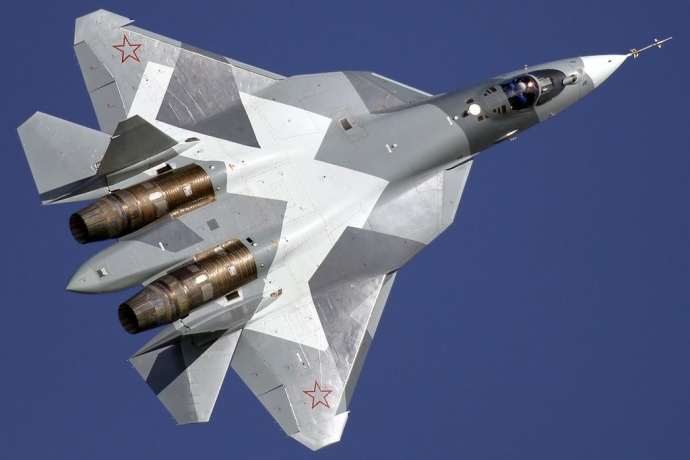
This also applies to all new projects, especially the fifth-generation fighter Su-57. Russia calls its fighter jet “the best in the world”, but, in twelve years of manufacture, has only produced a few, and one aircraft crashed in 2019.
For comparison, the United States has built close to 1,000 fifth-generation fighters. This includes the F-22 Raptor and F-35 models.
Trucks
The KamAZ corporation, which manufactures military trucks and towing vehicles for the Pantzir-C1 anti-aircraft systems, has also come under sanctions.
As it turns out, even these military models are equipped with American Cummnis engines, German ZF transmissions and Bosch fuel supply systems.
Until domestic suppliers can replace imports, Kamaz may turn to manufacturing Soviet-era models with lower load-bearing capacity and higher fuel usage after its reserves of spare parts are depleted.
Accordingly, defense contracts may also face delays and cancellations. This is especially critical during war time, while Russia endures heavy losses.
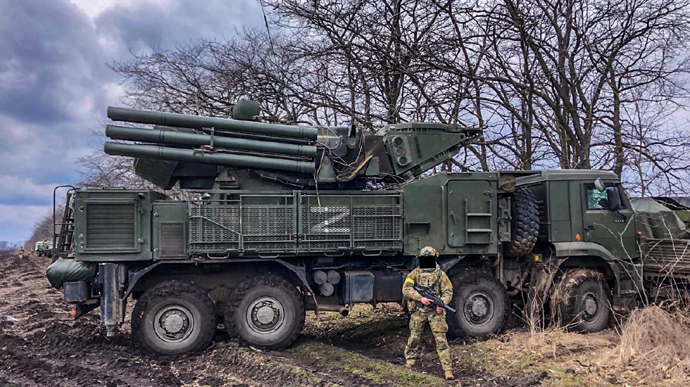
Crippling the Russian war machine
The sanctions have only just come into effect, and their immediate impact on the Russian military-industrial complex is hard to measure. A lot depends on the final list of restrictions and their enforcement. Russia’s biggest weakness is its high-tech industry.
For 30 years Russia has been losing once-powerful Soviet manufacturing capacity because of corruption, inability to compete on the global markets, and conflicts with former Soviet republics.
Of course, Russia can partially replace some crucial components, but it will be unable to approach the quality levels of foreign alternatives without access to the global markets.
Financial sanctions will also negatively impact Russian defense manufacturing by limiting corporate production capacity and state revenues. Corruption and vertical governance will further dampen the development of the military-industrial complex.
As a result, the Russian army will have a much harder time getting used to the necessities of modern warfare and developing cutting-edge weaponry.
However, the aggressor state still has a lot of battle-ready equipment and technology, which Putin’s regime has been preparing for the Big War during its many years in power.
This means that demilitarization of Russia will proceed in two ways - Western sanctions should deprive the Russian military-industrial complex of any future potential and the Ukrainian Armed Forces must destroy Russia’s past and present weaponry.
- Why the world must stop Putin in Ukraine
- Ukraine's strategy in Russian invasion: similar to Finland's Winter War
- Martyred city of Mariupol wiped out of existence by Russia’s incessant shelling
- How the Lviv train station welcomes Ukrainian refugees fleeing Russia’s war | Photo report
- What weapons for Ukraine would help it win the war against Russia
- Putin likely to view West’s declarations about Ukraine as appeasement, as Hitler did their predecessors’ words about the Rhineland, Pastukhov says
- Garry Kasparov: If Putin’s nuclear blackmail works against Ukraine, he will use it next in Poland or Estonia

